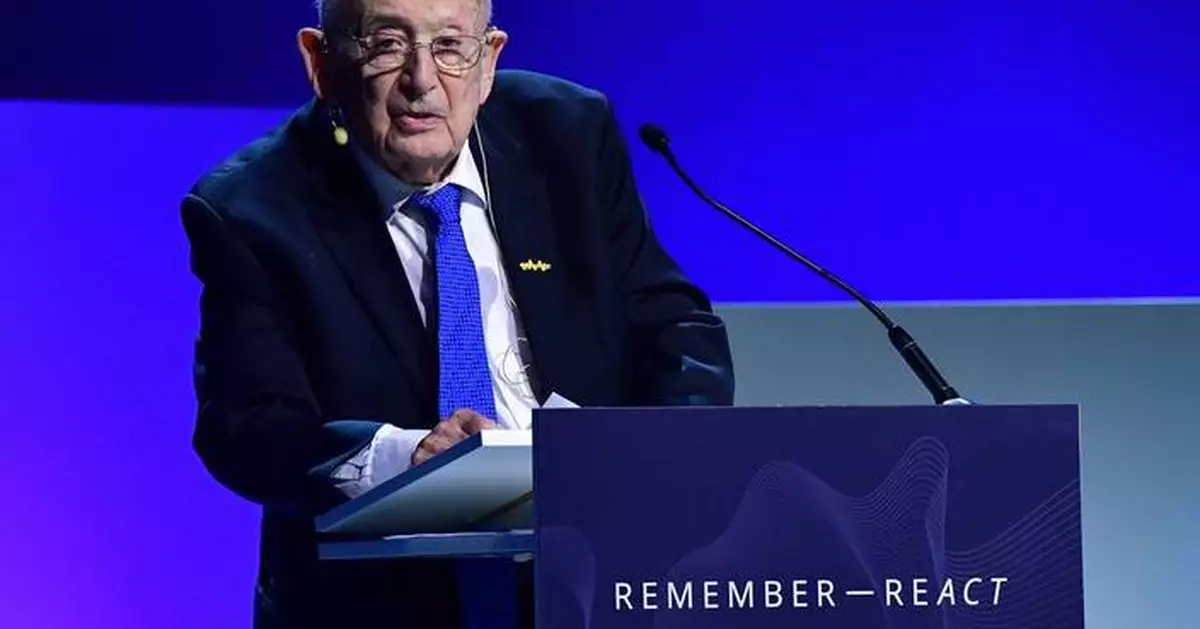TEL AVIV, Israel (AP) — Yehuda Bauer, one of Israel’s foremost Holocaust scholars who shaped the way people around the world study and learn about the Holocaust, has died in Jerusalem. He was 98.
No specific cause of death was given by the Yad Vashem, Israel's national Holocaust memorial in Jerusalem, which announced his death Friday evening.
Bauer published dozens of books and founded numerous international Holocaust education initiatives over a career that spanned more than six decades. He spoke Czech, Slovak, German, Hebrew, Yiddish, English, French and Polish, and learned Welsh while studying at Cardiff University in Wales. His mastery of languages allowed him to study source material in its original form and connect directly with audiences across the world.
“One of his important points was that the Holocaust is not only a particular event that affected particular people, but that the Holocaust was also universal,” said Dr. David Silberklang, a senior historian at the International Institute for Holocaust Research at Yad Vashem who worked closely with Bauer for years.
“Once it happened, and human beings did what they did, it has entered the playbook, the potential of what human beings could do and therefore could be done again,” he said.
Bauer was born in Prague in 1926. As a teenager, his family was able to flee Europe in 1939 and came to British Mandate Palestine via Romania. After returning from university in Wales, he joined Kibbutz Shoval in southern Israel and studied at the Hebrew University. He lived in Jerusalem for the last decades of his life.
Bauer launched his academic career in the 1960s, during a time when people in Israel were just starting to talk more openly about the Holocaust. In the immediate years after the Holocaust, as many survivors were shattered and trying to build their lives, very few people spoke openly about what had happened.
Silberklang said that the country needed time and perspective before it could start examining the Holocaust under an academic lens, and that Bauer was one of the first wave of scholars to begin rigorous research on a topic that had previously been too painful to discuss.
In Israel, shame and guilt swirled around perception that European Jews had gone “like sheep to the slaughter.”
Bauer’s research delved into different aspects of Jewish resistance and began to change the narrative of how victims of the Holocaust had found ways to resist the Nazis beyond just armed struggle, such as smuggling or continuing to observe religious or cultural traditions.
Some of his most well-known publications include “American Jewry and the Holocaust,” probing the American response to WWII; “Jews for Sale?” about negotiations to rescue Jews during the Holocaust; “Death of the Shtetl” about the decimation of the small Jewish communities in Europe; and “Rethinking the Holocaust,” examining fundamental questions about how to define and explain the Holocaust and how or whether the Holocaust can be compared to other genocides. Bauer was known for directly engaging with non-academic audiences and spoke widely around the world.
With European heads of state, Bauer helped create the International Holocaust Remembrance Alliance (IHRA) in 1998, a coalition of more than 35 countries that requires its members to devote government funding to Holocaust education and commemoration. With IHRA, Bauer also helped author the Working Definition of Antisemitism, which is used by many governments and organizations to help define hate crimes and discrimination against Jews.
Bauer was awarded the Israel Prize, one of the country’s highest honors, in 1998. Silberklang said Bauer remained engaged and active until the end of his life, including writing Op Eds and contributing to academic discussions.
Silberklang said Bauer disagreed with the comparison of Hamas’ Oct. 7 attack against Israel to the Holocaust, noting that the Palestinian militant group is not as strong or organized as the Nazis and the state of Israel exists to provide a military response.
A lover of music, Bauer had a deep baritone and was known to sing duets with some of his academic partners or break out into traditional Welsh folk songs he learned as a university student, Silberklang said.
He is survived by two daughters, three step-children, and numerous grandchildren.
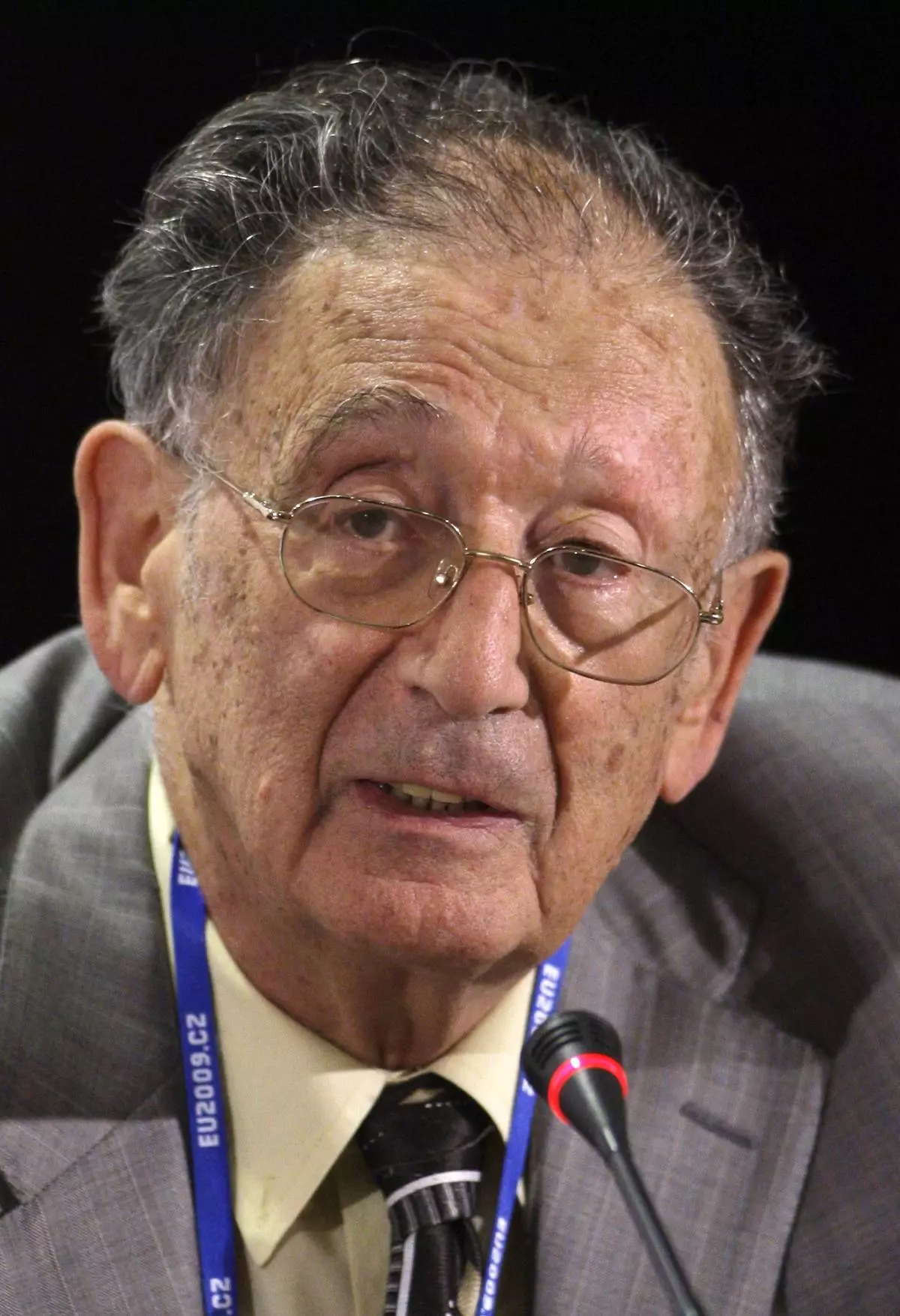
FILE - Professor of Holocaust Studies at the Hebrew University of Jerusalem, Yehuda Bauer, addresses the media during a news conference during the Holocaust Era Assets Conference in Prague, Czech Republic, June 29, 2009. Bauer has died at the age of 98. (AP Photo/Petr David Josek, File)

FILE - Professor Yehuda Bauer speaks during the Malmo International Forum on Holocaust Remembrance and Combating Antisemitism - REACT in Malmo, Sweden, Oct. 13, 2021. Bauer has died at the age of 98. (Jonas Ekstromer/TT News Agency via AP, File)
CAMBRIDGE, New York (AP) — After he and his fellow monks sang morning prayers in their church nestled in a forest, Brother Luke walked back to his residence to be greeted by a different kind of choir.
Lucy and Iso excitedly woofed as they spotted the Orthodox monk, who heads the monastery’s German shepherd breeding program, coming to take them and 10-week-old Pyrena for their morning walks.
For nearly six decades, the monks of New Skete in upstate New York have financially supported their community and deepened their spiritual life by breeding German shepherds and running on-site, weekslong training programs for all kinds of canines.
“One of the things that a dog teaches is about God — forgiveness and love and connection, those are attributes of God,” Brother Luke said on a sunny October morning, while Lucy nosed around fallen leaves and Iso kept a vigilant eye on his monk. “In the rough and tumble of life, we don’t always exhibit God’s love as well as the dog does.”
The small community — today comprising 10 monks and about the same number of adult German shepherds — was started by Franciscan friars who were seeking a more contemplative yet rooted spiritual structure than the Catholic orders were providing them, said Brother Marc. One of the founders — and now 82 — he directs the choir at New Skete together with Brother Luke.
They were inspired by the “explosion of wonderfulness” of the Second Vatican Council to return to ancient but simpler and more accessible practices, like those of the first ascetics in the Egyptian desert, from whom the name skete derives, and who also received pilgrims and performed other community services. The monks officially joined the Orthodox Church in America more than four decades ago; icons of male and female saints from Eastern and Western Christianity adorn the golden walls of the larger of the monastery’s two churches.
By the late 1970s, what had started as a gift of one German shepherd, Kyr, to protect and keep company to the little band of brothers on a forested mountainside where New York and Vermont touch, was revolutionizing their monastic life.
“He became part of the emotional life of the community. All these celibate men living together, where’s the heart in all this?” Brother Marc recalled of Kyr and how his presence brought joy and smoothed over any tensions.
When Kyr died, the monks decided to get more dogs, and to breed them to help sustain the monastery, which like most convents around the world needs to pay for its own upkeep. Then they had to take on training them, so the growing pack could peacefully share the dormitory, refectory and even church with the brothers.
Visitors were impressed by the well-behaved German shepherds and asked the brothers to train their dogs too. One of the early clients turned out to be an editor who encouraged the monks to write about their training philosophy, which was far gentler than the norm at the time.
More than half a dozen widely popular books and a TV series later, the monks today train about 120 dogs a year in the monastery, said Brother Christopher, the prior and director of the training program.
“Training the dogs became for me a means to see more broadly the mystery of God’s presence in creation,” said Brother Christopher, who joined the monastery in 1981. “Dogs are absolutely guileless, they don’t lie. They mirrored me back to myself in a way that was very helpful to my own self-knowledge.”
Building a sustainable relationship between dog and owner, grounded in connection but also structure, is key to the training. Far beyond obedience to basic commands like sit or heel, the pets — and their humans — need to learn the balance of letting dogs be dogs while providing the affection and emotional support their owners seek.
The vast majority of America’s 100 million pet dogs doesn’t need a professional trainer. But many do if their owners want their company in public places or they’re struggling with behaviors ranging from chewing furniture to lunging at the neighbors, said Marc Goldberg, a trainer in Chicago and former president of International Association of Canine Professionals.
The monastery, certified by the association, is the only religious institution among its thousands of members, he added. And while owners of all faiths or none are welcome, the monks infuse their spiritual principles into their relationship with the dogs – in line with a tradition of including animals in spirituality that ranges from Native American practices to the medieval legend of St. Francis taming a wolf that’s portrayed in New Skete’s refectory.
“Monks work very hard but there’s a peacefulness to the life that is palpable,” said Goldberg, who has co-authored several training books with the brothers.
Dog training is expensive – the monks charge about the average for boarding and training, $3,500 for 2.5 weeks, which has become a more reliable source of income than the breeding program. The latter is kept small to give all dogs attention and avoid turning them into a puppy mill, Brother Christopher said.
Whether in the breeding or the training program, the dogs bring the community closer to God’s creation, encourage paying attention to each present moment, and naturally model Christian virtues, the brothers say.
“A relationship with a dog can sensitize us to a deeper connection with all of creation. That’s humbling,” said Brother Christopher. “We’re simply part of this wondrous world that is ultimately interconnected.”
For Brother Luke, who had never been around dogs before joining the monastery in 1995, the first raucous welcome from the German shepherds jumping out by the dormitory came as a bit of a shock. Today, he’s in awe of witnessing up close “the reality of life,” whether observing the competition in mating season or one of his dogs whelping.
“They’re forgiving, perfectly natural, they are what God created them to be. Those are lessons we could learn,” he said. “Over time, dogs teach us a lot about ourselves. They think we’re better than we are.”
And among all the hard work of keeping up a monastery — hosting visitors, supporting community services like a food pantry in the nearby village of Cambridge, studying Scriptures and intensely praying — the dogs offer simple, nurturing affection.
Most monks keep their dogs in their rooms, so they come back to furiously wagging tails and melting eyes that signal it's the happiest moment of the dog’s day.
“My gosh, that just does something very deep,” Brother Christopher said. “It’s an experience of unconditional love.”
Associated Press religion coverage receives support through the AP’s collaboration with The Conversation US, with funding from Lilly Endowment Inc. The AP is solely responsible for this content.
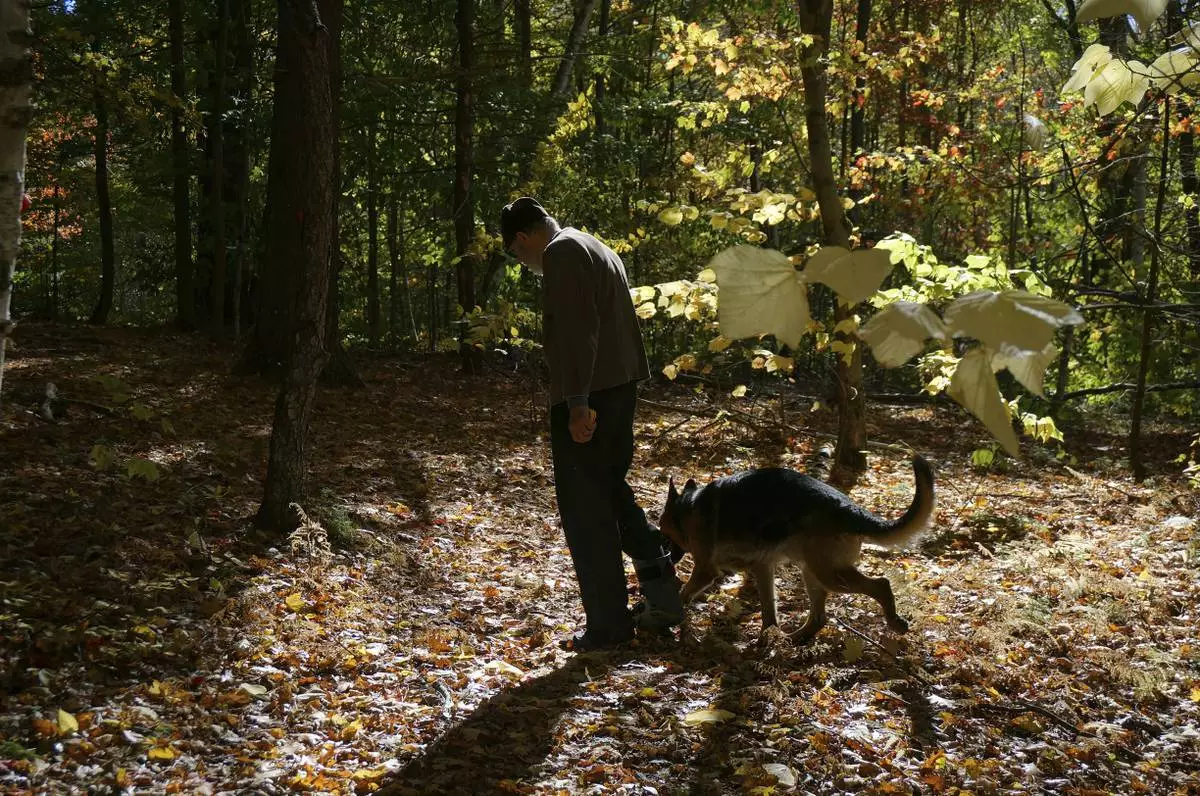
Brother Luke, an Orthodox Christian monk, takes his German shepherds for a walk on the mountainside trails around the monastery of New Skete, which for decades has run both a dog breeding and a dog training program outside Cambridge, N.Y., on Oct. 12, 2024. (AP Photo/Giovanna Dell’Orto)
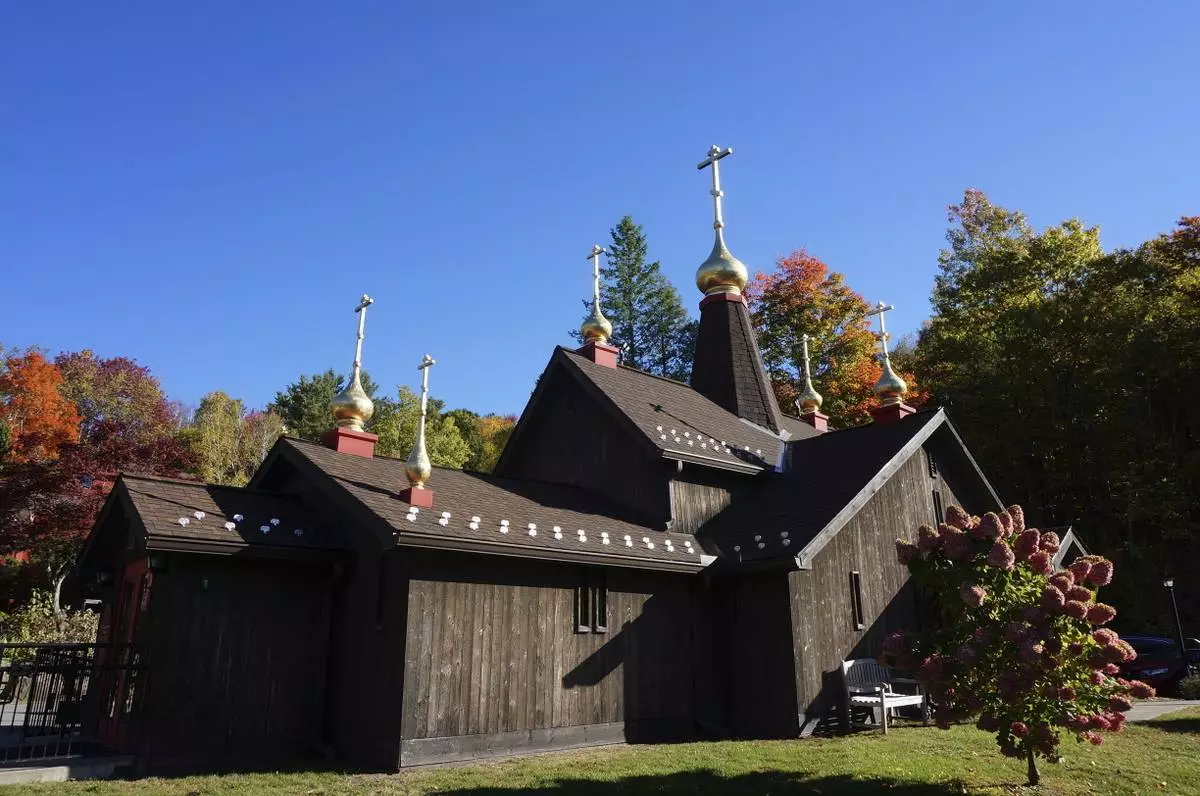
The Church of Holy Transfiguration, built by monks in 1970, stands on the campus of New Skete, a Christian Orthodox monastery renowned for dog breeding and training programs outside Cambridge, N.Y., on Oct. 12, 2024. (AP Photo/Giovanna Dell’Orto)
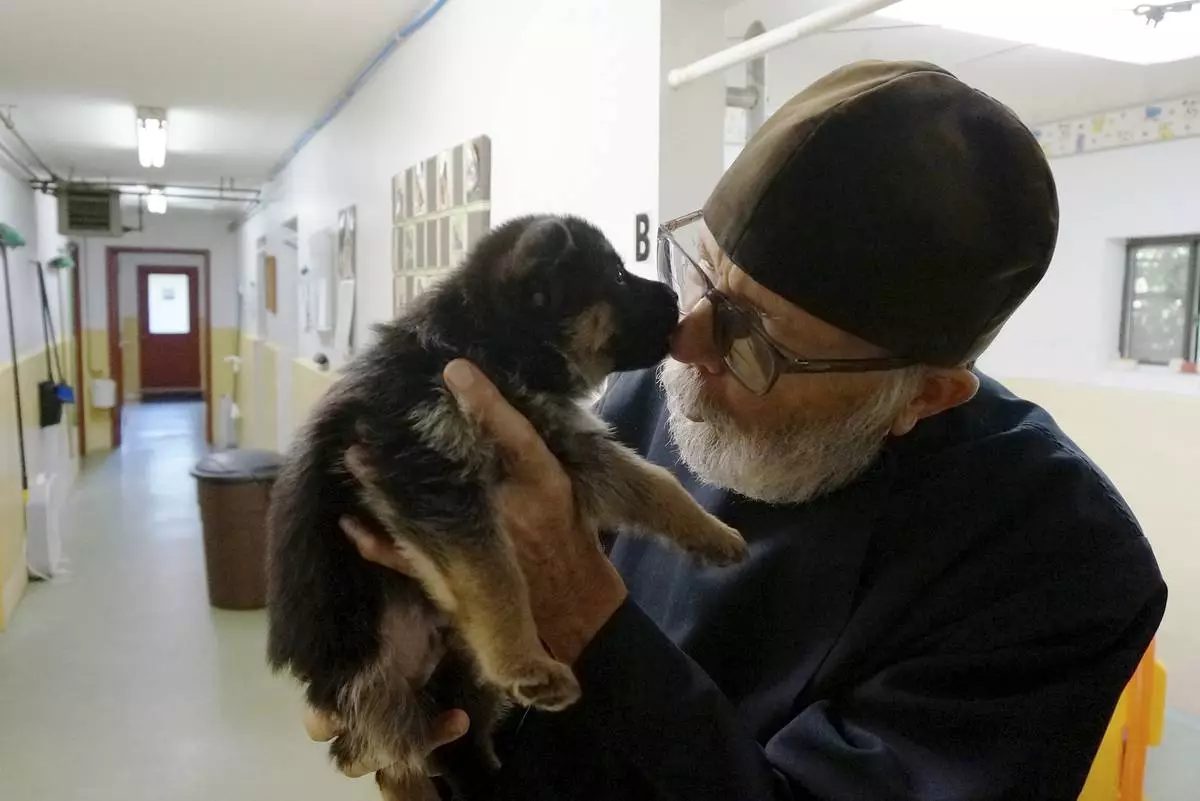
Brother Luke, an Orthodox Christian monk, holds a five-week-old German shepherd puppy from the latest litter in the dog breeding program that for decades has provided both financial and spiritual support to the New Skete monastery outside Cambridge, N.Y., on Oct. 12, 2024. (AP Photo/Giovanna Dell’Orto)
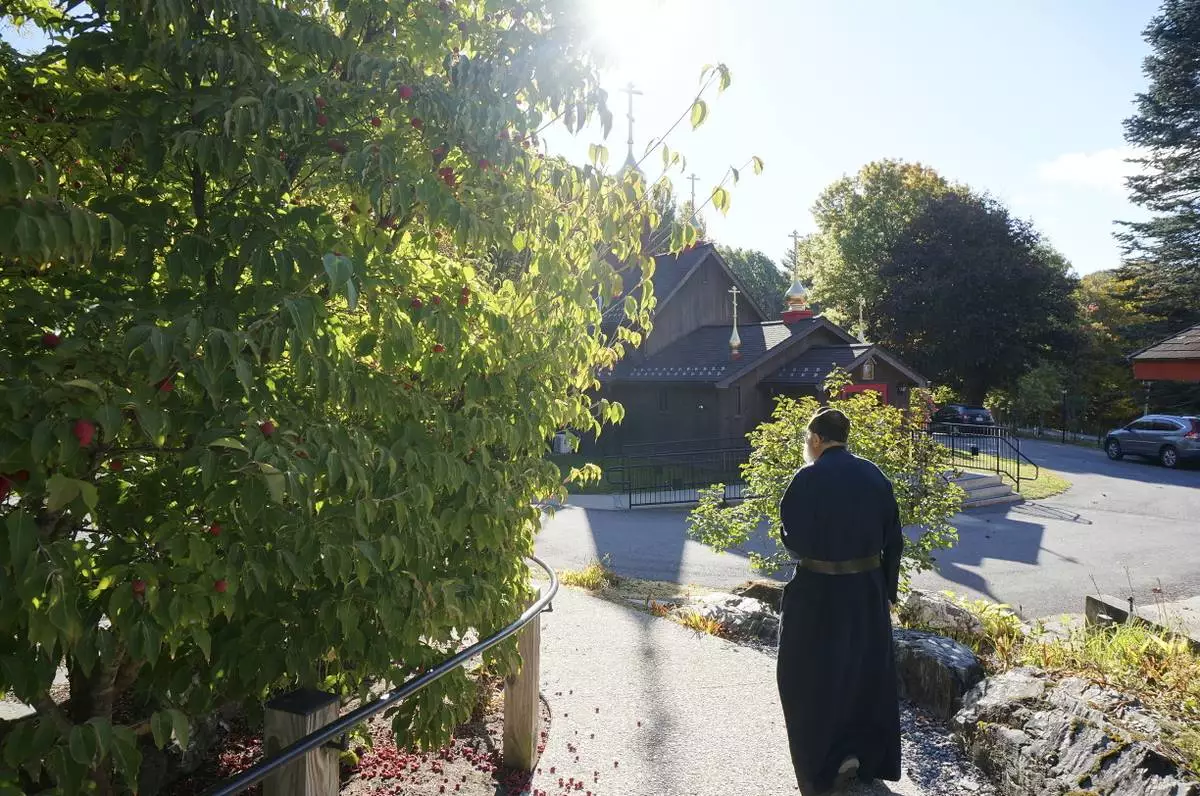
Brother Luke, an Orthodox Christian monk, walks toward the Church of Holy Transfiguration, the first church built by the brothers in 1970 for the New Skete monastery, which runs both a dog breeding and a dog training program outside Cambridge, N.Y., on Oct. 12, 2024. (AP Photo/Giovanna Dell’Orto)
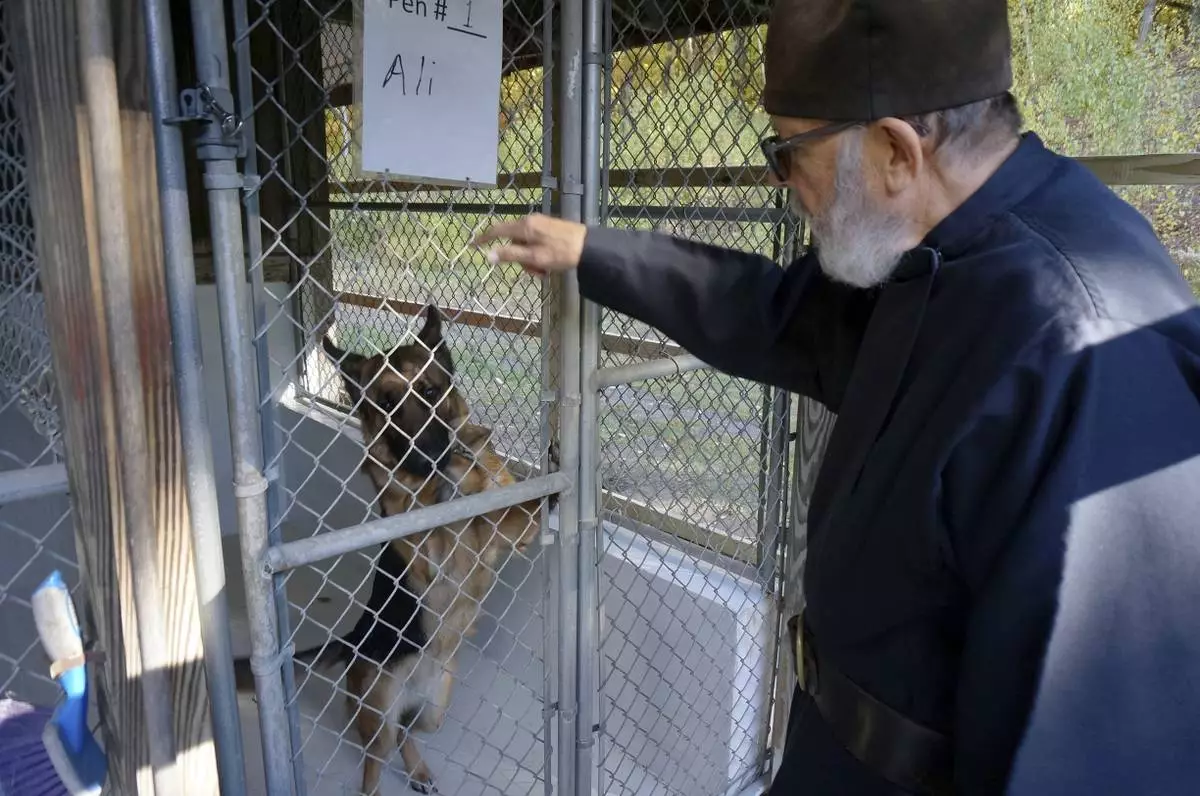
Brother Luke, an Orthodox Christian monk, plays with one of the dogs in the German shepherd breeding program he directs at New Skete monastery outside Cambridge, N.Y., on Oct. 12, 2024. (AP Photo/Giovanna Dell’Orto)
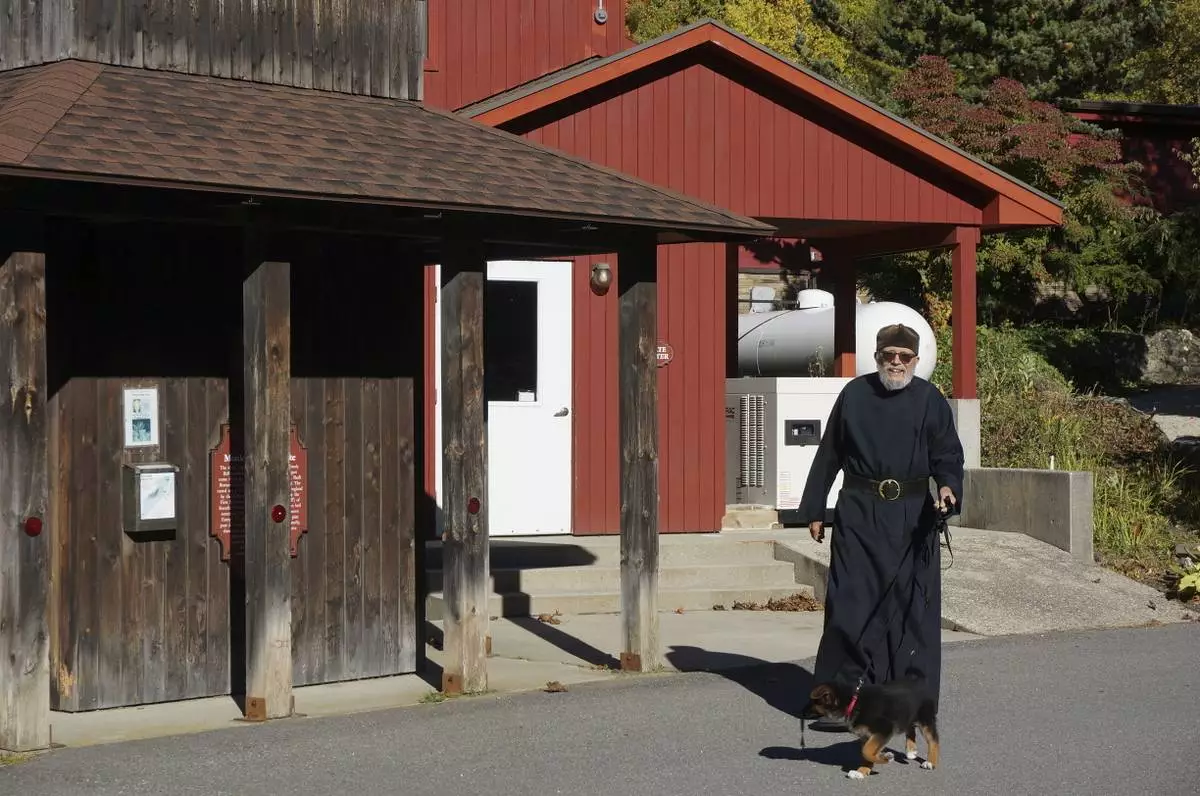
Brother Luke, an Orthodox Christian monk, walks his 10-week-old German shepherd Pyrena outside the residences of the New Skete monastery, where he directs the dog breeding program that has provided both financial and spiritual support to the community for decades outside Cambridge, N.Y., on Oct. 12, 2024. (AP Photo/Giovanna Dell’Orto)
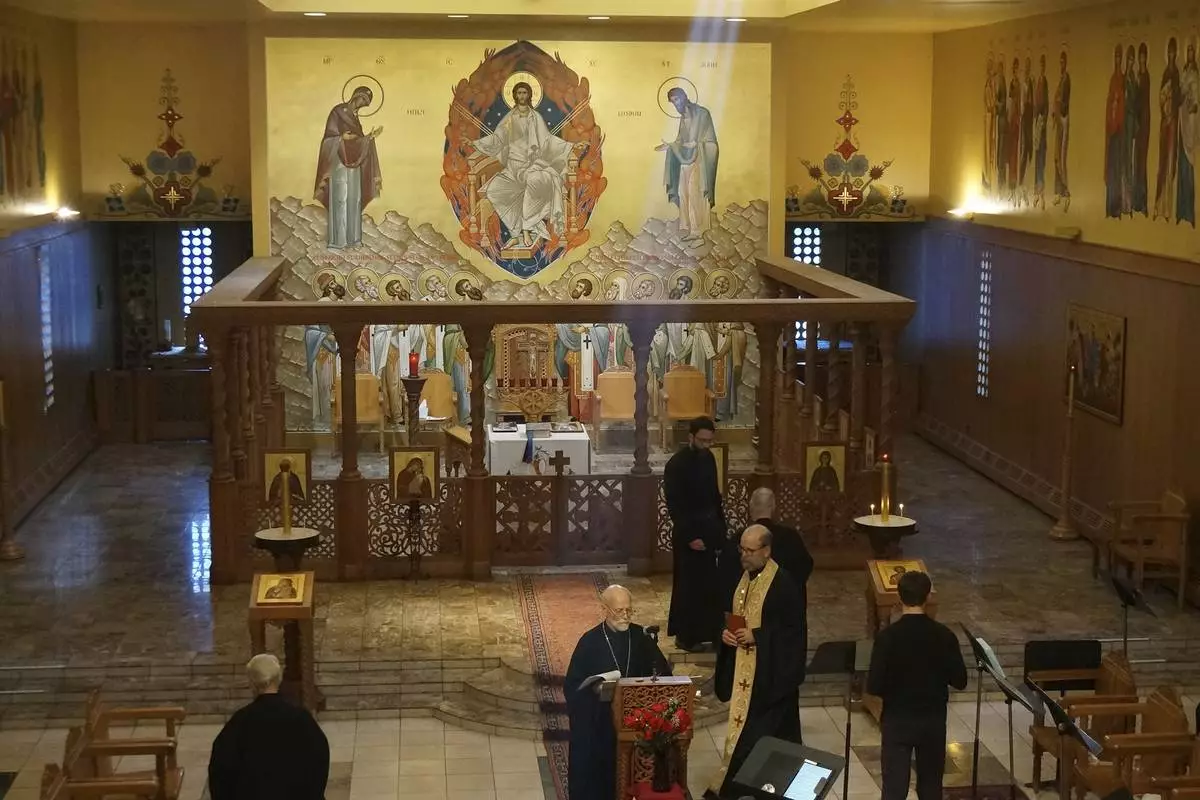
Brother Marc, center, one of the founders of the Orthodox Christian community of New Skete, and its current prior, Brother Christopher, right, holding book, finish morning prayers in the Church of Holy Wisdom, the larger of two churches of the monastery renowned for dog breeding and training programs outside Cambridge, N.Y., on Oct. 12, 2024. (AP Photo/Giovanna Dell’Orto)
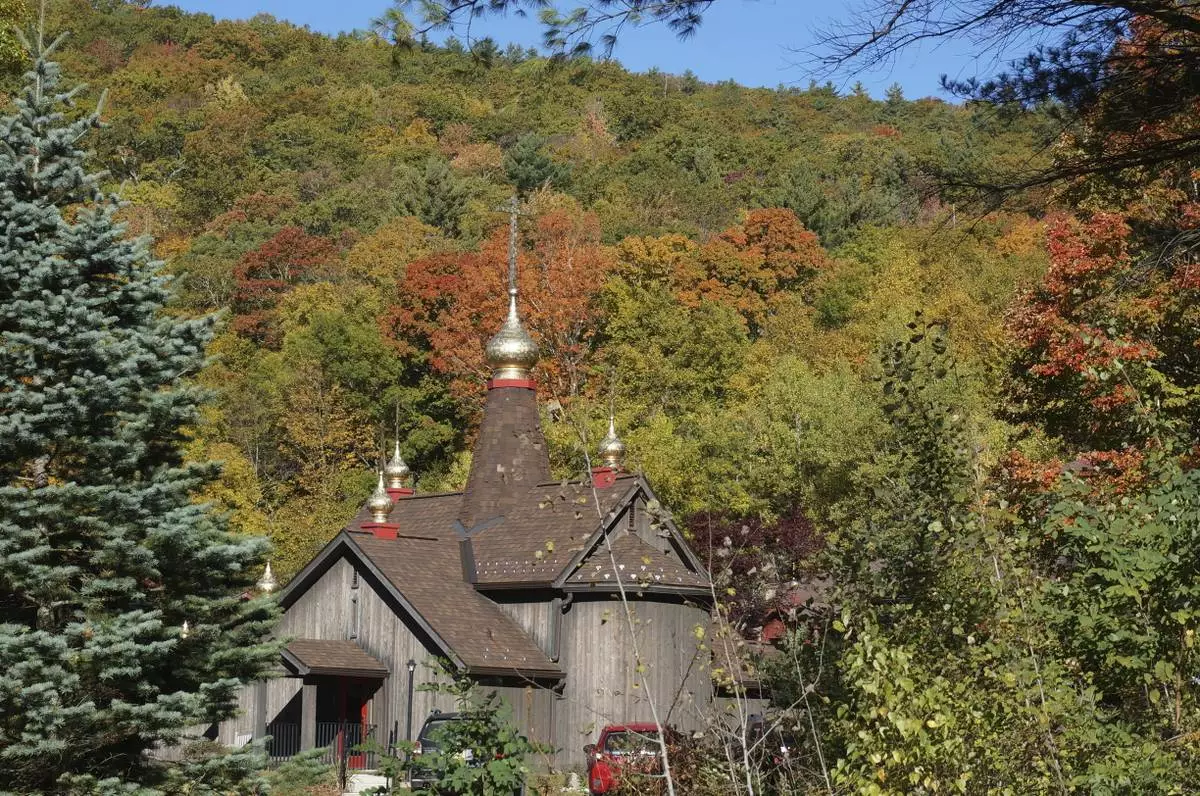
The Church of Holy Transfiguration, built by monks in 1970, is seen through fall foliage on the campus of New Skete, a Christian Orthodox monastery renowned for dog breeding and training programs outside Cambridge, N.Y., on Oct. 12, 2024. (AP Photo/Giovanna Dell’Orto)
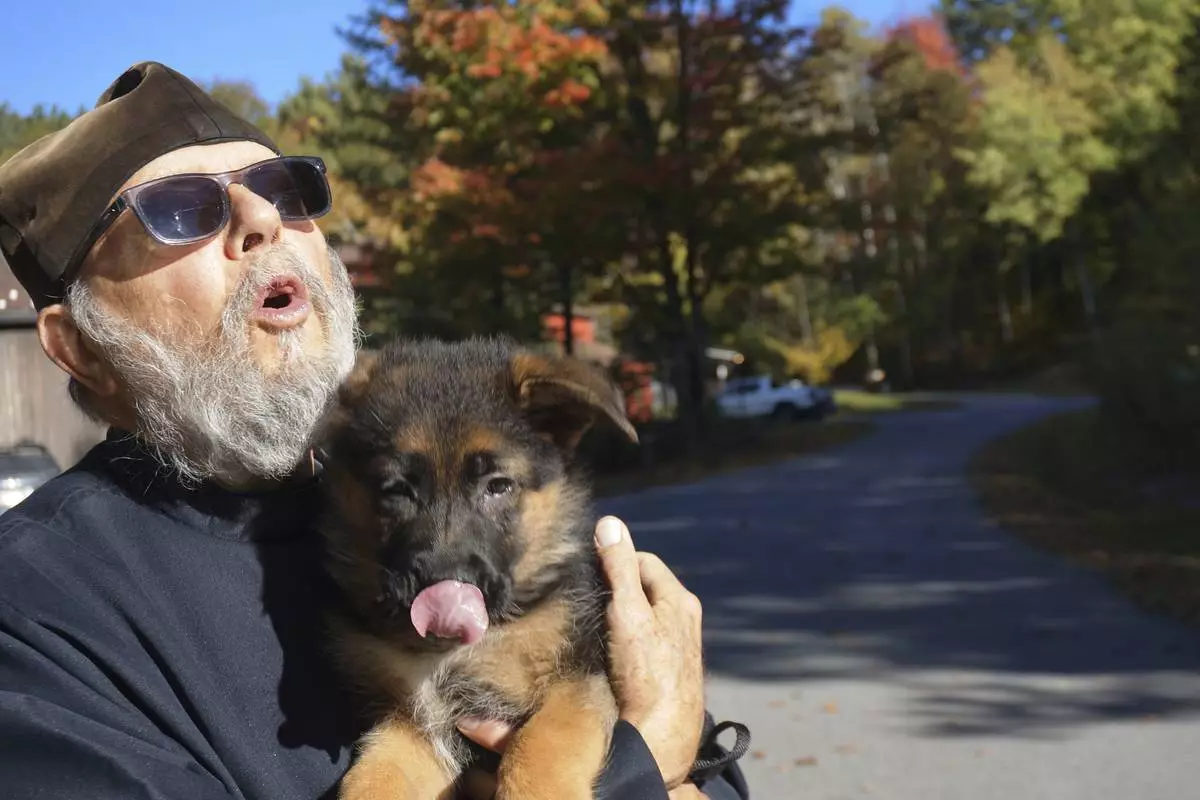
Brother Luke, an Orthodox Christian monk, holds his 10-week-old German shepherd Pyrena on the grounds of the New Skete monastery, where he directs the dog breeding program that has provided both financial and spiritual support to the community for decades outside Cambridge, N.Y., on Oct. 12, 2024. (AP Photo/Giovanna Dell’Orto)




